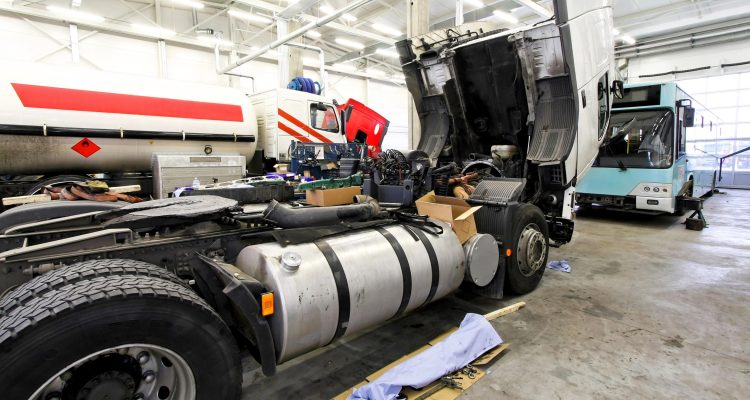Fleet management technology is evolving at a faster pace than ever. From predictive analytics to AI-assisted maintenance, the industry is moving toward complete visibility of vehicle health. Now, a breakthrough innovation known as the vehicle MRI could take diagnostics to an entirely new level — offering full internal scans that reveal faults long before they cause breakdowns or safety issues. Imagine knowing your truck’s engine health as precisely as a doctor knows a patient’s heartbeat. That’s the kind of clarity this next-gen system promises.
What Exactly Is a Vehicle MRI?
The concept of a “vehicle MRI” takes inspiration from medical imaging. Instead of using magnetic resonance to scan a body, these machines use advanced electromagnetic and ultrasonic technology to create a detailed picture of a vehicle’s internal systems. This includes the engine, transmission, electrical wiring and chassis, allowing technicians to pinpoint wear, corrosion and developing faults without physically dismantling the vehicle.
These scanners are already being tested on heavy-duty trucks in the U.S., where early trials show remarkable results in detecting invisible structural and mechanical issues before they escalate into costly failures. While vehicle MRIs aren’t yet mainstream, they’re moving beyond the prototype stage and may soon be adopted by large-scale fleets as part of standard maintenance procedures. In other words, this isn’t science fiction — it’s the future of preventive maintenance taking shape right now.
How Vehicle MRIs Could Revolutionise Fleet Maintenance
Traditional maintenance relies on inspection schedules and driver reports, but those approaches can’t always catch what’s happening beneath the surface. Vehicle MRIs flip that model entirely. By scanning for internal changes in metals, fluids and electrical currents, these systems provide early warnings of potential failures, reducing unplanned downtime and extending vehicle lifespan.
For example, imagine receiving an alert that a gearbox is showing early signs of stress weeks before it fails. Fleet managers using different fleet management software could schedule a controlled repair rather than face a roadside breakdown, saving time and budget. Early detection and data-driven decision-making can significantly reduce repair costs and enhance asset longevity. Vehicle MRIs could take that proactive approach even further, offering real-time, precise health data that makes maintenance almost predictive.
Beyond cost savings, this technology could strengthen safety compliance and support sustainability goals by reducing parts waste and unnecessary replacements. For fleets managing hundreds of vehicles, those cumulative benefits could reshape how operations are planned from the ground up.
From Diagnostics to Data Goldmine
Fleet MRIs aren’t just about spotting problems. Instead, they’re about unlocking a new level of insight into every vehicle you operate. Each scan generates a detailed data profile that can be integrated into telematics platforms, maintenance systems and analytics dashboards. Over time, that data paints a complete picture of a vehicle’s performance history, revealing long-term wear patterns and helping you forecast replacements and budget needs with greater precision.
For fleet managers already investing in digital tools, vehicle MRIs could close one of the final visibility gaps, which is the true internal condition of each asset. That’s powerful for maintenance, compliance and resale value tracking. Upgrading to smarter diagnostic systems can make long-term operations more sustainable and reduce avoidable repair waste.
In practical terms, this means fewer surprises, tighter control over operating costs and the potential for automated, data-driven service scheduling, transforming reactive maintenance into a fully predictive system.
Challenges and Real-World Limitations
Despite its potential, widespread adoption of vehicle MRI technology won’t happen overnight. The equipment is highly specialised and can be expensive to purchase or lease, particularly for smaller fleet operators. Some systems require large diagnostic bays and trained technicians to interpret the imaging results, which may pose logistical barriers for companies without dedicated facilities.
Integration is another hurdle. Many fleets operate mixed-age vehicles and older models may not interface easily with the digital tools that support MRI data. There are also early concerns around data management and privacy, as vehicle health data becomes more granular and interconnected with other fleet systems.
Industry experts predict these challenges will diminish as the technology scales. Much like GPS and telematics once did, vehicle MRIs are expected to become more compact, affordable and automated as adoption grows — potentially reaching mainstream commercial use within the next decade.
The Road Ahead
Vehicle MRIs could soon make reactive maintenance obsolete, enabling you to plan every service, every part order and every replacement based on real-time data. For UK fleet managers, staying ahead means keeping an eye on these developments, especially as similar innovations begin migrating from the U.S. market to Europe. Those who adopt early will gain efficiency and peace of mind — knowing their fleets are running at peak health, backed by science as precise as an MRI.
Author: Evelyn Long, Editor-in-Chief of Renovated Magazine






